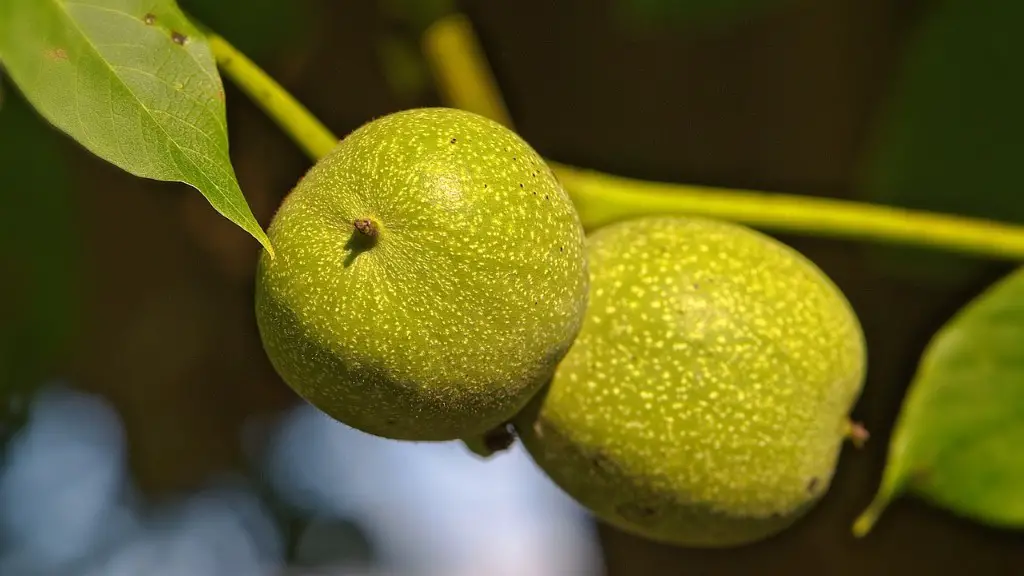Growing citrus trees can be rewarding, and lemons are a delicious addition. There are several steps one can take to get their lemon tree to fruit. To begin with, a lemon tree needs to be in a location that receives full sun – a minimum of six hours of sunlight during the day. It is recommended to fertilize the soil with a good quality citrus fertilizer to ensure the tree receives the necessary nutrients for growth. Furthermore, for optimal growth, it is important to keep the tree pruned to ensure good airflow and sunlight penetration. The branches should be trimmed in an upward direction to give the tree an open and conical shape.
In addition to these steps, the tree must receive regular irrigation to keep the soil constantly moist. This should be done on a weekly or biweekly basis, depending on the soil’s water-holding capacity. Furthermore, it is important to avoid over-watering, as this can lead to root rot. The tree should also be treated with fungicides and insecticides as needed to control pest infestations and disease.
The lemon tree also needs to be provided with adequate pollination for it to bear fruit. One way to do this is by introducing bees to the garden, which can significantly improve pollination. It is also a good idea to collect and distribute pollen from adjacent citrus trees during the flowering season. This will ensure a more even distribution of the pollen, resulting in better pollination and higher yields.
To ensure a healthy crop, it is important to regularly inspect the tree for signs of disease, such as yellowing of leaves or mite infestations. If any of these issues are noticed, it is important to take swift action and apply the necessary treatment. In some cases, the entire tree may need to be removed in order to prevent the spread of disease.
Finally, harvests of lemons should be done at the right time so as to ensure maximum sweetness and flavor. The fruit should be harvested when the lemons turn yellow, as this indicates they are ripe and at their peak flavor. Harvesting too early can lead to unripe fruit with poor flavor.
How to Water a Lemon Tree
To ensure a successful harvest of lemons, it is important to water the lemon tree properly. This can be achieved through regular irrigation, which will ensure the tree is adequately hydrated at all times. It is recommended to reduce water during the winter months, as this will reduce the risk of fungal diseases. The best time to water is either in the morning or late evening, as this will minimize water loss due to evaporation.
Moreover, to keep the soil in optimal condition, it is recommended to add compost or manure to the soil regularly. This will not only add nutrients to the soil, but it will also improve the soil’s water-holding capacity, which is beneficial during periods of drought. Regular mulching is also recommended to help lock in moisture and provide insulation from drastic temperature changes.
Finally, for trees located in harsh climates, it is important to provide them with some protection from the elements. This can be achieved by covering the tree with plastic sheets or burlap during winter, as this will help the tree retain the warmth, reducing the risk of frost damage.
Mulching the Lemon Tree
Mulching is an important part of citrus tree care as it helps lock in moisture in the soil and protect the roots from fluctuations in temperature. The best time to perform mulching is during the warmer months, as this will help the soil retain warmth during cold weather. It is recommended to use organic mulches, such as bark or compost, as these will slowly release nutrients into the soil.
Moreover, it is important to make sure that the mulch is not piled too high, as this can lead to rot. Furthermore, the soil should be turned regularly to allow for better aeration and improved drainage. This will help reduce the chances of root rot, which can be a major issue for citrus trees.
Finally, it is important to check for weed growth in the vicinity of the tree and to remove them as soon as they appear. Weeds compete for resources with the tree, reducing its growth potential. Therefore, it is important to keep the area around the tree free from weeds.
Fertilizing the Lemon Tree
Fertilizing is an important step for the successful growth of a lemon tree, as adequate nutrition is essential for fruit quality and yields. The best fertilizers to use are those specifically formulated for citrus trees. These fertilizers are generally made up of a mix of nitrogen, phosphorus and potassium, which are essential for the growth of the tree.
One should also make sure to use an appropriate amount of fertilizer, as over-fertilizing can be harmful to the tree. Furthermore, any spilled fertilizer should be cleared up and disposed of properly. Fertilizers can be applied directly to the soil or diluted in water and applied via irrigation.
Finally, the fertilizer should be applied at the right time of the year – typically during the spring and summer months. It is also important to avoid fertilizing during the fruiting season as this could lead to reduced yields.
Pruning the Lemon Tree
Pruning is another important step for citrus tree care. The main purpose of pruning is to ensure good airflow and adequate sunlight penetration, as these are essential for good fruit yields. Pruning should be done in an upward direction for trees with an open and conical shape. For those with denser foliage, the tip of the branches should be cut off to give the tree a more open shape.
It is important to use the right tools when pruning the tree. A sharp pair of pruning shears should be used to make clean cuts without damaging the branches. Pruning should be done at least once a year, and more often if needed.
Furthermore, it is important to remove any dead, diseased or damaged branches as soon as they are noticed. This should be done with caution so as to avoid injuring the healthy parts of the tree. It is also important to make sure that no branches are overgrown and blocking the sun from the fruits, as this could lead to reduced yields.
Finally, it is important to dispose of all cut branches and leaves properly, as these can provide fertile breeding grounds for pests and diseases. This should be done on a regular basis to ensure the surrounding area stays free from any potential health hazards.
Pest and Disease Control
To ensure the health of the lemon tree, it is important to regularly inspect it for signs of pests and disease. Diseases are usually caused by fungi, bacteria or viruses and can often be identified through visual inspection or through lab tests. Common pests include aphids, scales and mealybugs, which can be controlled through the use of insecticides and fungicides.
It is also important to be vigilant against any potential pest or disease outbreaks. Regular monitoring, especially during the spring and summer months, will help detect any signs of disease early on and allow for swift preventative action. If left unchecked, pests and diseases can quickly spread and cause a great deal of damage to the tree.
Finally, it is important to take steps to protect the tree from extreme weather conditions. Covering it with plastic sheets or burlap in cold, wet weather will protect the tree from the elements, while ensuring adequate ventilation at the same time.




